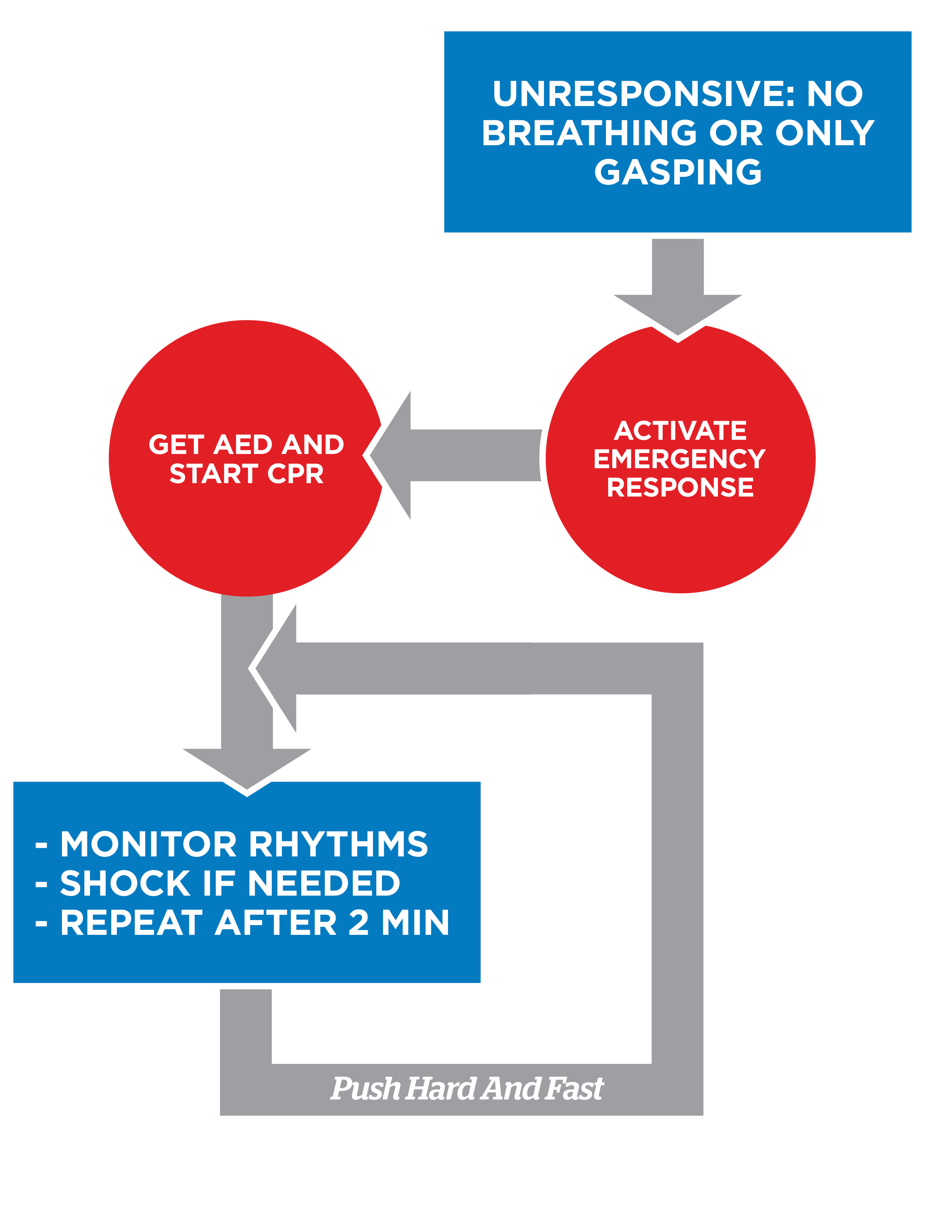(ACLS) BLS for Adults
For adults, BLS demands the coordinated execution of multiple tasks. Oftentimes, two or more people are on hand to perform CPR. In this carefully studied method, chest compressions, securing rescue breaths, directing the airway, and using the AED are all important actions that are done together by a team. As a team your primary objective for CPR in particular is to maximize chest compression time and minimize any pauses. With these synchronized efforts, several rescuers can shave off critical seconds of lost time, where each valuable second adds damage to the heart and brain.
Simple Adult BLS Algorithm

Figure 3
